North Llanrwst
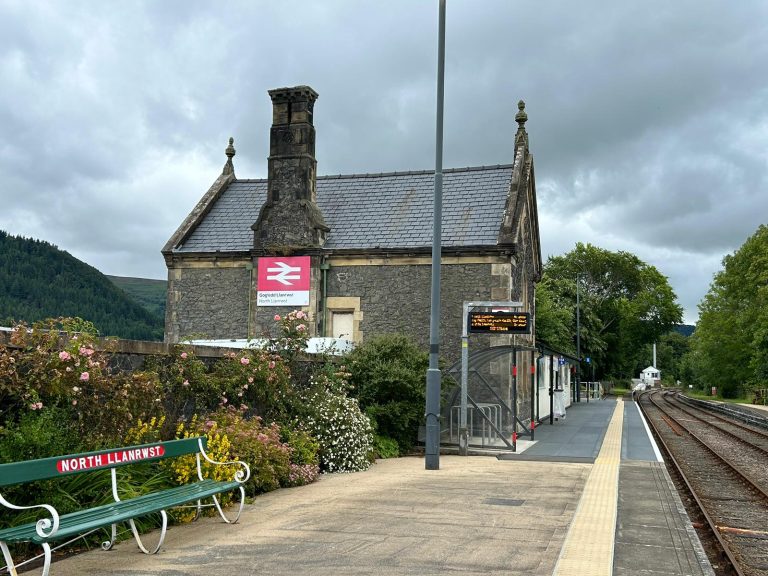
North Llanrwst railway station opened in 1863 as the terminus of the Conway and Llanrwst Railway which was taken over by the London and North Western Railway in 1867 and extended to Betws-y-Coed in 1869. In the years following its…

North Llanrwst railway station opened in 1863 as the terminus of the Conway and Llanrwst Railway which was taken over by the London and North Western Railway in 1867 and extended to Betws-y-Coed in 1869. In the years following its…
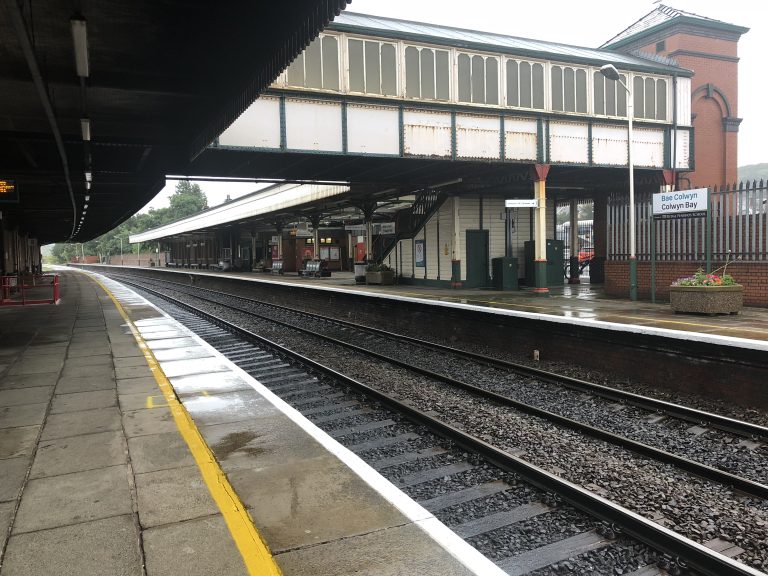
Colwyn Bay quickly developed as a resort town with the coming of the railway in the 19th Century. Among the wide range of historic buildings in the town is the oldest cinema in Wales (now with 21st Century technology) and many…
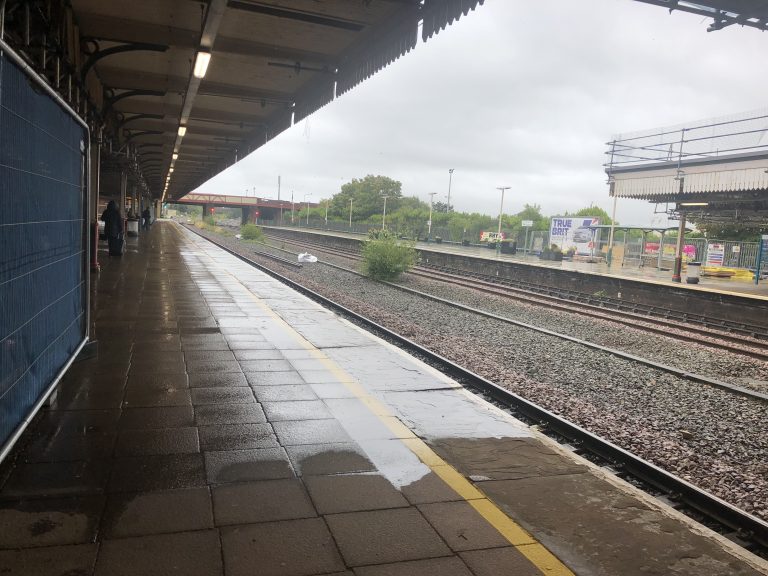
Rhyl’s long sandy beach meant that it was the first of the North Wales coastal towns to develop as a resort – two hotels were built here in the 1820s, and tourism in the town was boosted by the arrival…
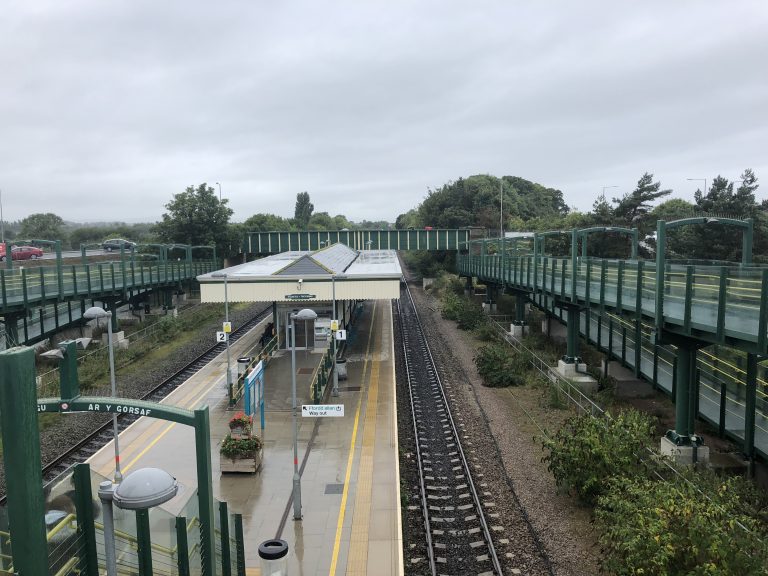
Today we see and enjoy at Prestatyn a fine sandy beach, sand dunes, a four mile-long promenade, Victorian high street, golf club, caravan park resorts, fitness centre and cinema. This is very different to what was here 2,000 years ago,…

Shotton railway station is unusual in that it is on two different levels. Trains on the North Wales Coast Line stop on the lower level platforms, and trains on the Borderlands Line stop at the high level station. It is…
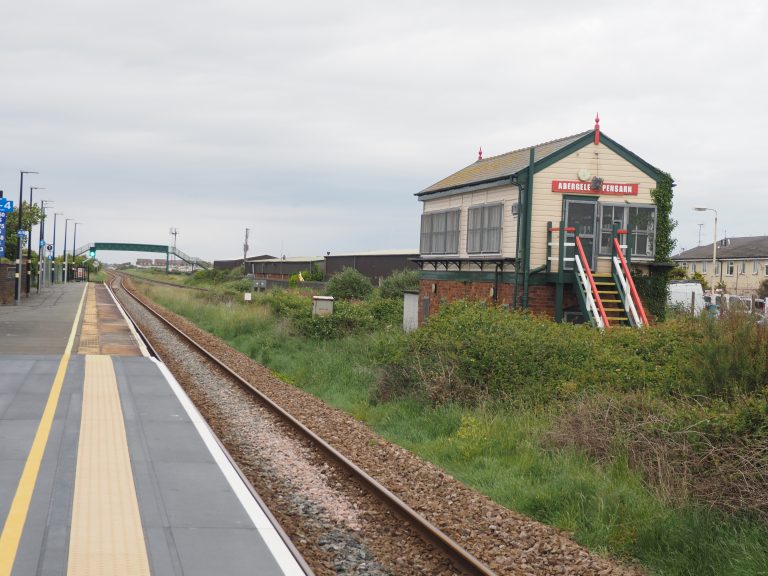
Abergele has a long history, having been a Roman town and port, and the location of a Celtic monastery (which was on the site of the present Parish Church). The town’s most famous landmark is Gwrych Castle. It was originally…
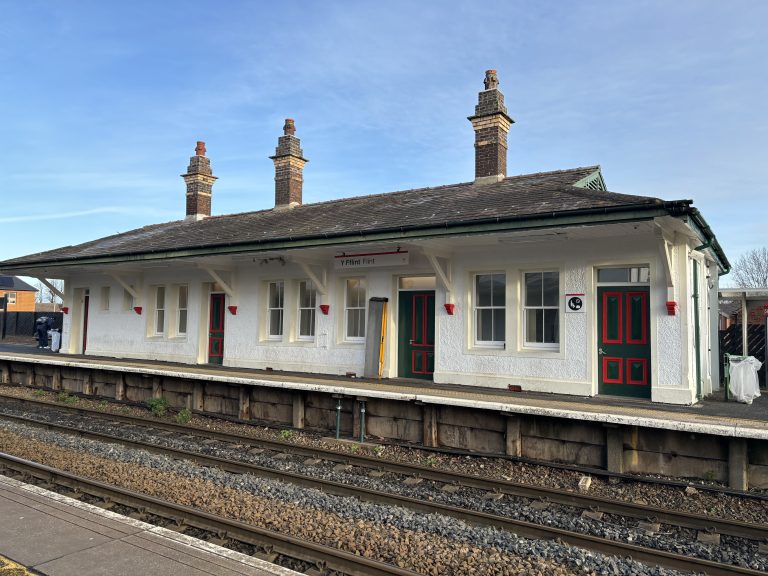
Flint, the former county town of Flintshire, is built on the west shore of the estuary of the River Dee. The town and castle were built at the same time by Edward I of England, who wished to control the…

Llandudno is the northern terminus of the Conwy Valley Line and is acclaimed to be one of the most beautiful seaside resorts in the United Kingdom. It is famous for its Victorian style and Edwardian elegance which is evident throughout…
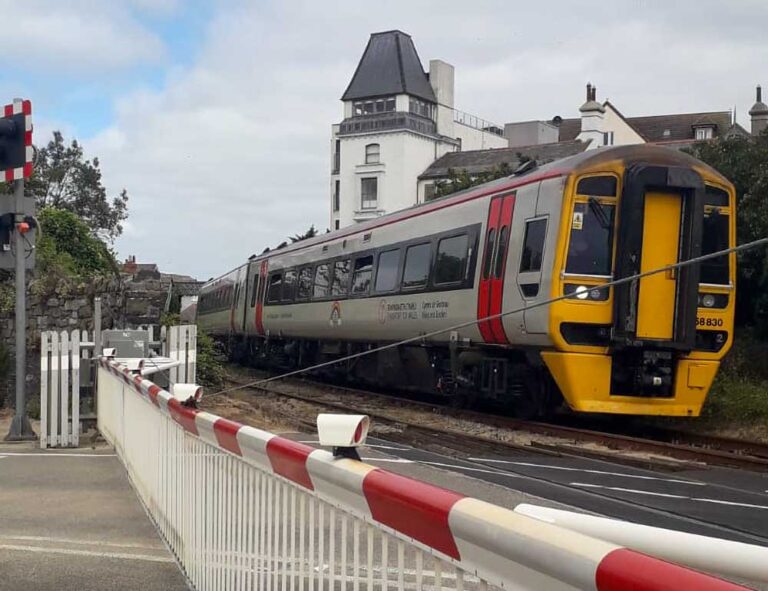
This delightful resort captures some of the finest views of Snowdonia, the Conwy Estuary and Castle, and across Conwy Bay to Puffin Island and Anglesey. Looking across from the town of Conwy, one can view the hillock above Deganwy known…
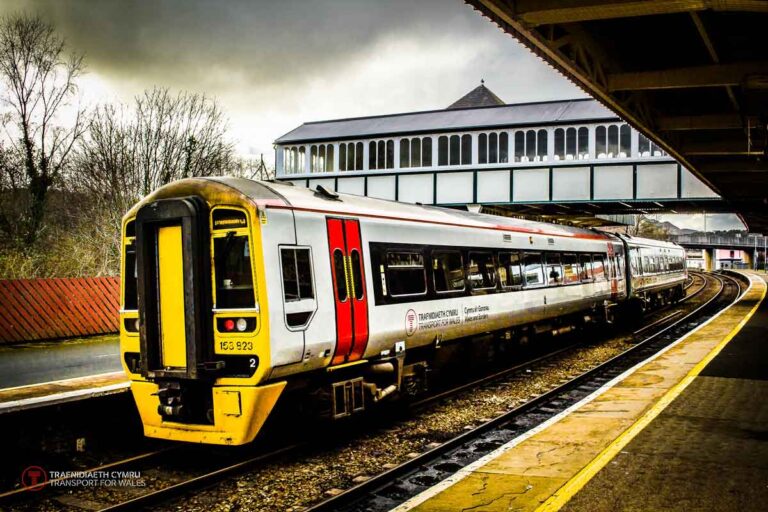
Llandudno Junction lies approximately halfway between Chester and Holyhead and is the interchange between the Conwy Valley Line and the National Rail Network. March 2024 saw the official opening of Porter’s Coffee Shop at the railway station. Open Monday to…
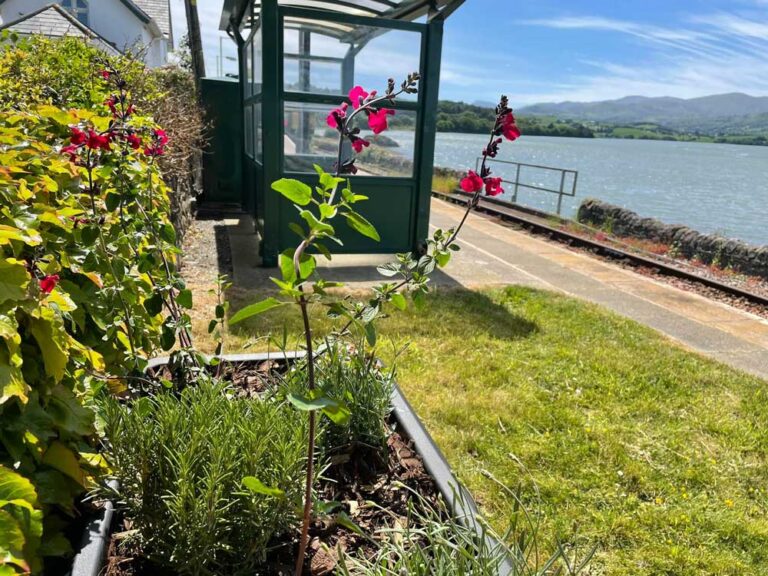
The Conwy Valley Line follows closely the broad sweep of the estuary and at Glan Conwy at low tide the mud flats fill with all kinds of wading birds. Shellduck, cormorant, lapwing and heron feed along the waterline largely ignoring…
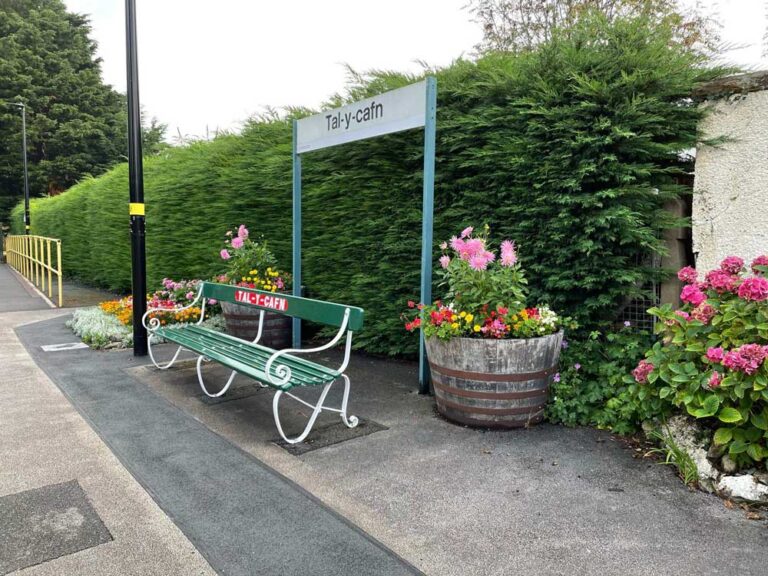
At Tal y Cafn, unseen from the train, the line passes close to the site of a Roman encampment, Caerhun, where stands the beautiful 13th century church of St. Mary. The bridge at Tal y Cafn is of considerable importance…
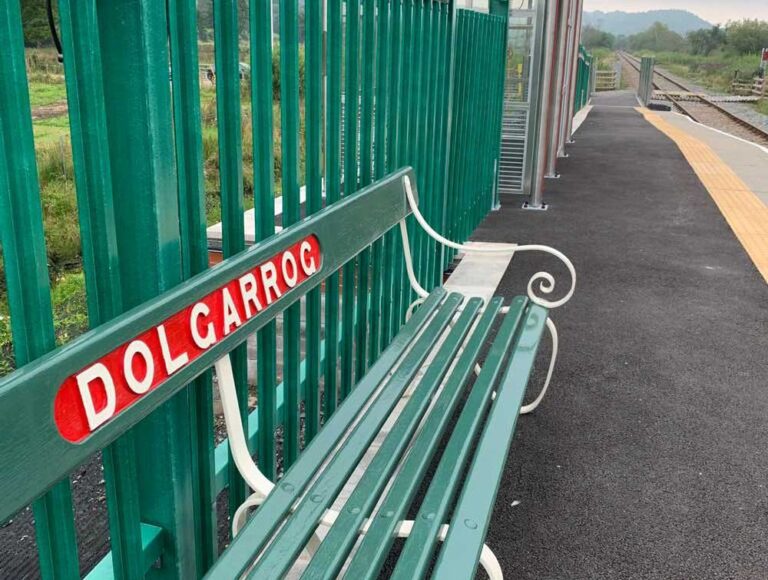
The tiny halt of Dolgarrog is an ideal place to commence a walk across the river on what was once the rail link to the aluminium works. Spanning the broad expanse of the river Conwy the bridge leads you to…
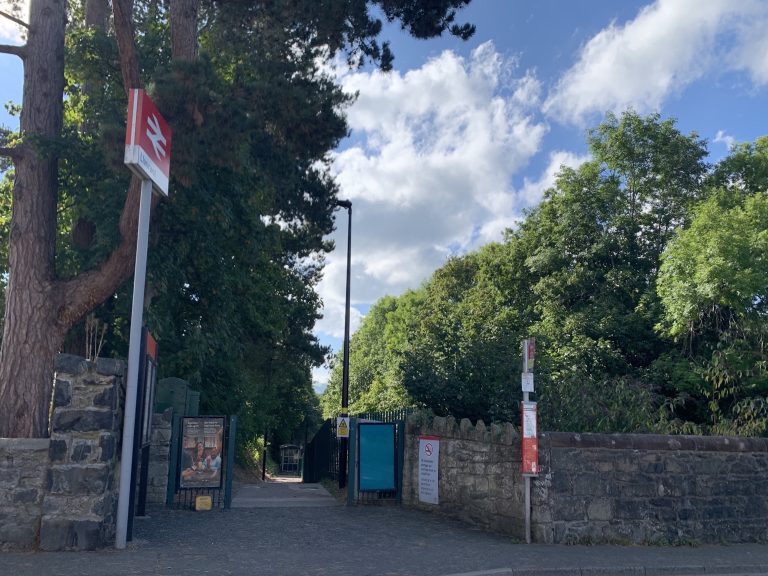
This busy market town is a focal point for Conwy valley farmers and is an ideal touring centre for mountains, lakes and seaside. The bridge spanning the river Conwy was built in 1636 and reputedly designed by Inigo Jones. Near…
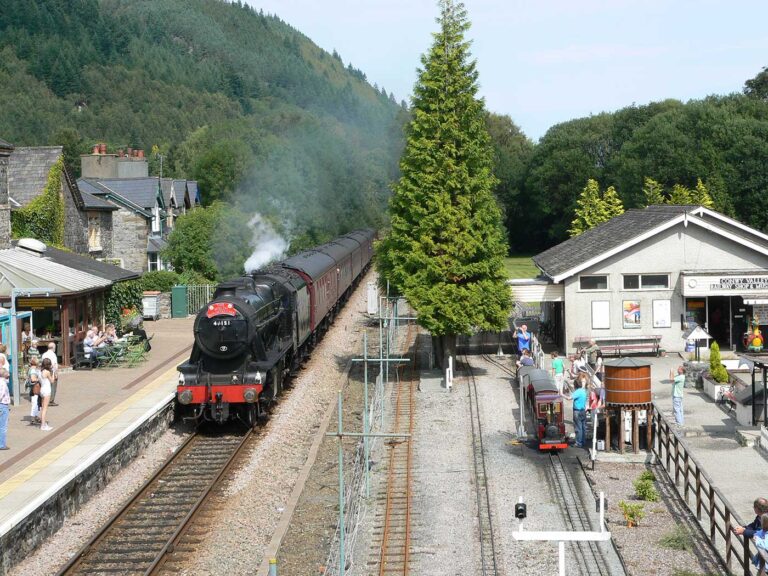
Betws y Coed is recognised as Wales’ most famous inland resort with the busiest railway station on the Conwy Valley line. The three tributaries of the river Conwy, the Llugwy, the Machno and the Lledr meet here at Betws y…
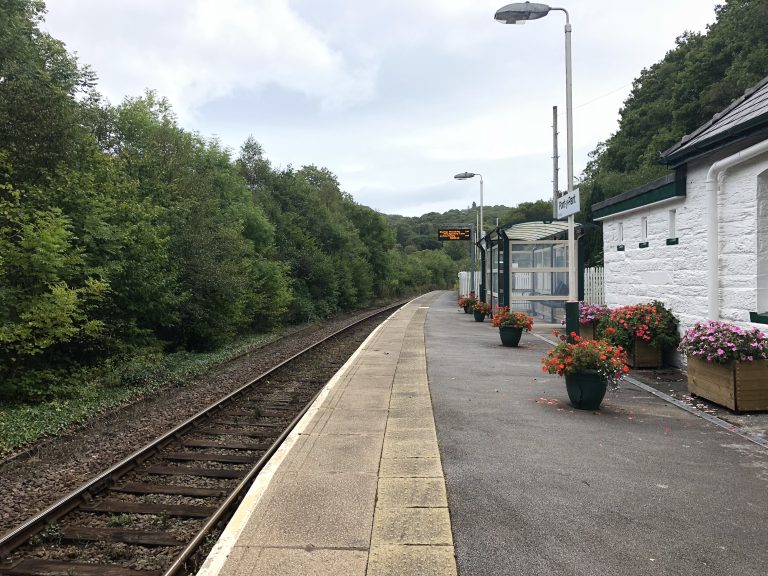
Pont y Pant station, in the heart of the ruggedly beautiful Lledr valley would be the best starting point for those interested in walking to Bishop Morgan’s house, Ty Mawr, a National Trust property accessible by direct hill-path or an…
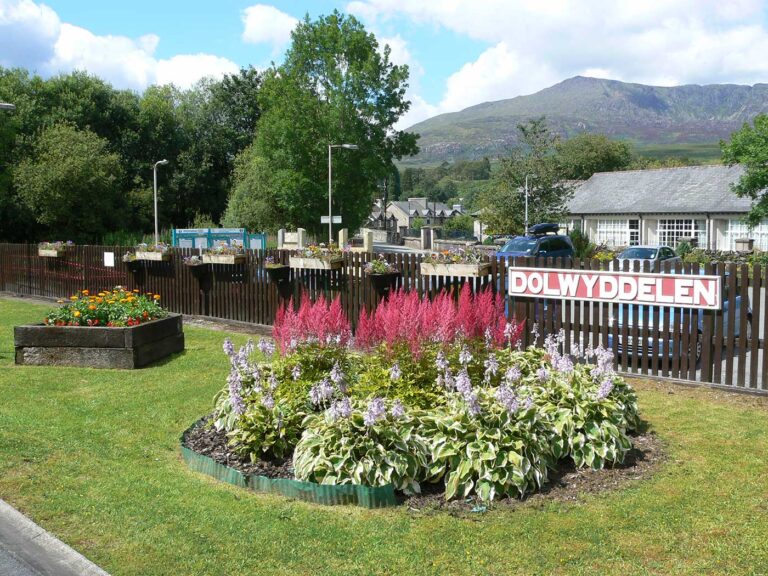
In the indescribable beauty of the Lledr valley lies the village of Dolwyddelan, a mere minute’s walk from the station. A peaceful and unspoilt village, its little church of Sant Gwyddelan is well worth a visit. Inside hangs an old…
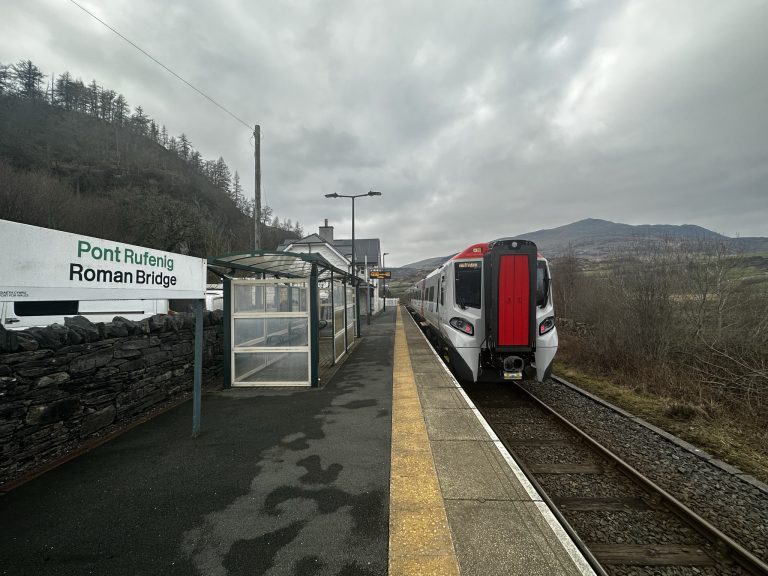
Alighting at Roman Bridge station you are confronted with the breathtaking beauty of the secluded cwm of Blaenau Dolwyddelan nestling in the shadow of Moel Siabod. From here it is but a short off-road walk to Dolwyddelan Castle, the 12th…

Emerging from the long tunnel into the station, the history of the slate industry of Blaenau Ffestiniog is revealed. Gloddfa Ganol mine, now closed to tourists, was once the biggest slate mine in the world. Llechwedd Slate Caverns offer a…
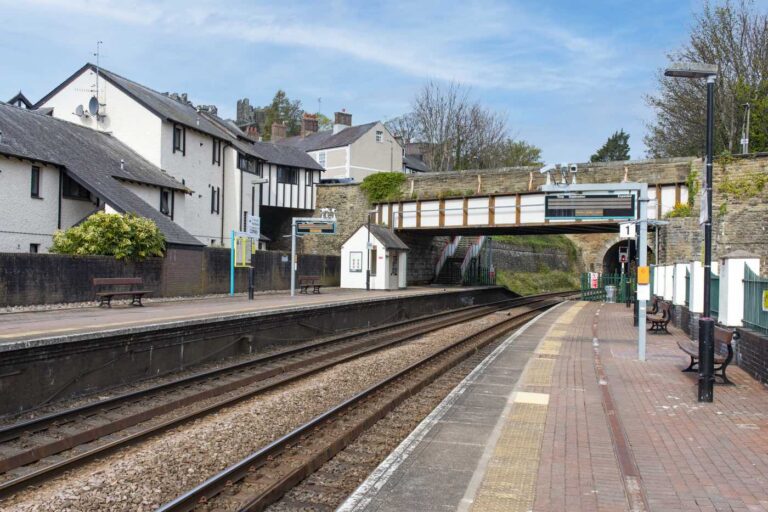
Situated within a few steps of Conwy Tourist Information Centre, Conwy railway station was opened on 1 May 1848. Despite being a busy line in a bustling tourist town, between 1966 – 1987, the station was closed as part of…
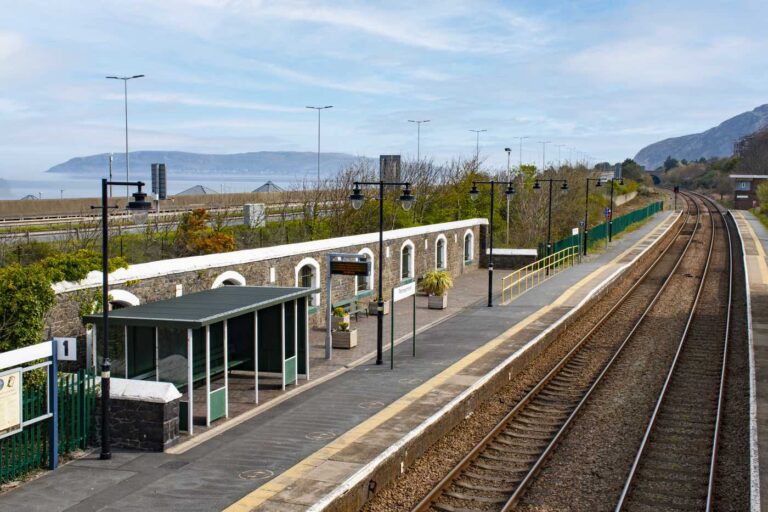
“I do not know of a more healthy place; a more satisfactory climate is not to be found to my knowledge in this country.” These were the parting words of Prime Minister William Gladstone in 1896 on what was to…
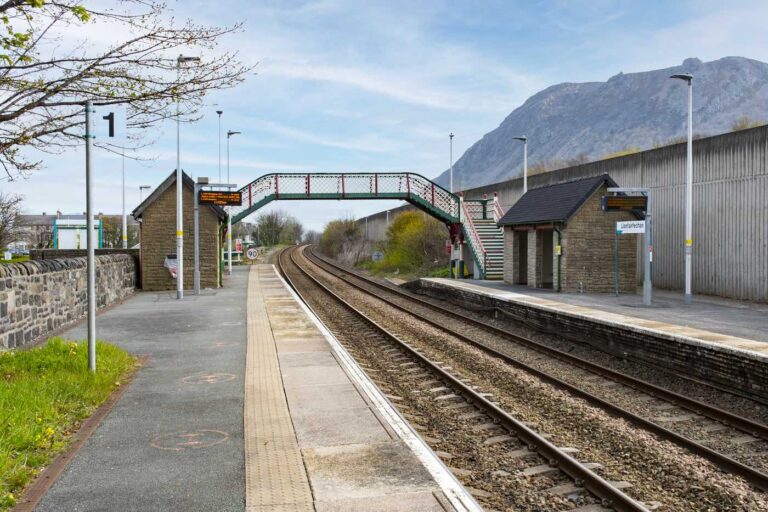
Llanfairfechan railway station opened in May 1860. It was built by the London & North Western Railway (the organisation instrumental in the development of the Conwy Valley railway) as a stop on the Chester to Holyhead main line. A station…
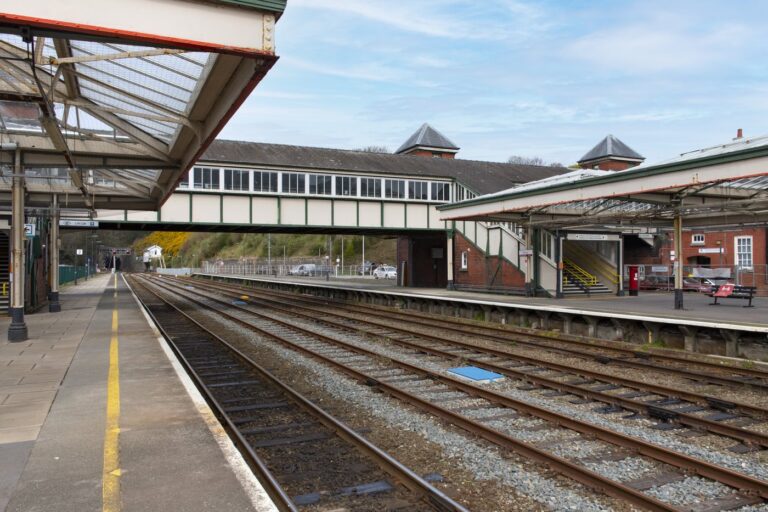
Bangor railway station, which cost £6,960 to build (about £22 million today), was designed by architect Francis Thompson and opened in May 1848 by the Chester & Holyhead Railway. It is the last mainland stop for the North Wales Coast…
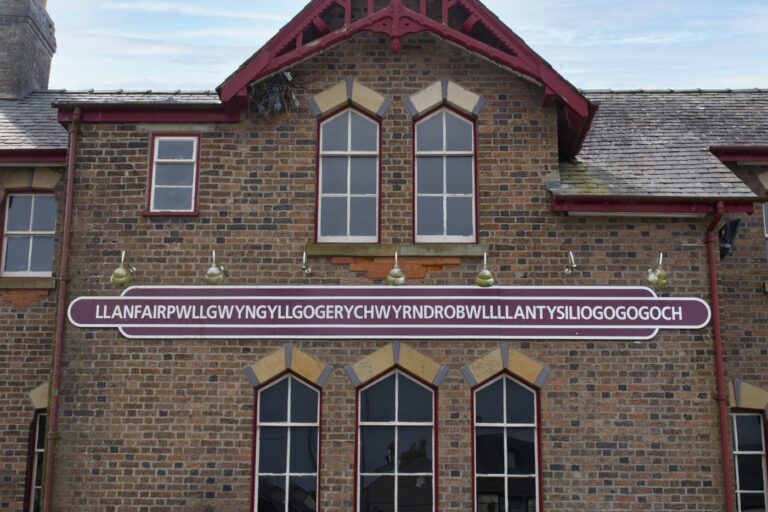
Llanfairpwll Railway Station serves the village of Llanfairpwllgwyngyll on the island of Anglesey. The village is world-famous for its full title: Llanfairpwllgwyngyllgogerychwyrndrobwllllantysiliogogogoch Despite many myths and stories springing up around the origins of the name, it was no more than…
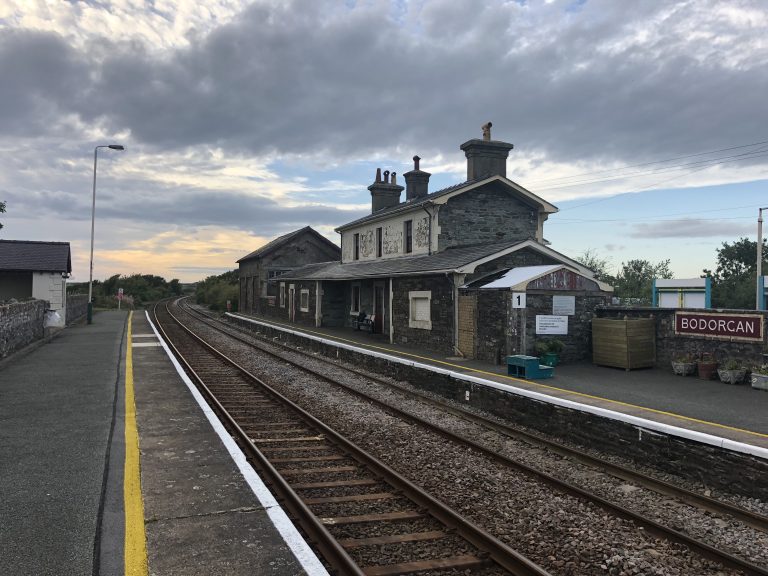
Bodorgan railway station serves the rural hamlet of the same name and the nearby village of Bethel. The station, which was originally to be called Trefdraeth, was opened in October 1849. Today, it serves as a request stop for Chester…
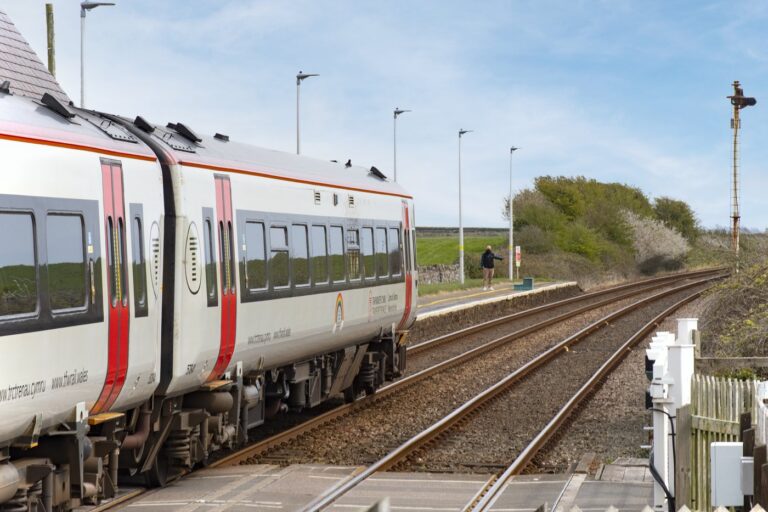
Ty Croes station was opened in November 1848 with the signal box you see today added in 1872. The box is located next to a hand-operated level crossing which separates the two staggered platforms. It is possible to enjoy some…
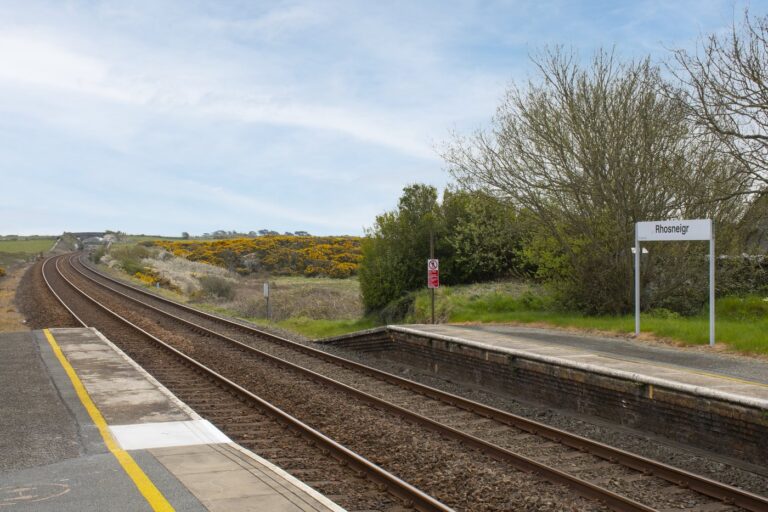
Rhosneigr railway station, opened in 1907, serves the popular and picturesque seaside village of Rhosneigr. Winner of the Green Coast seaside award, Rhosneigr beach is just a 20-minute walk from the railway station. With two broad sandy beaches, it is…
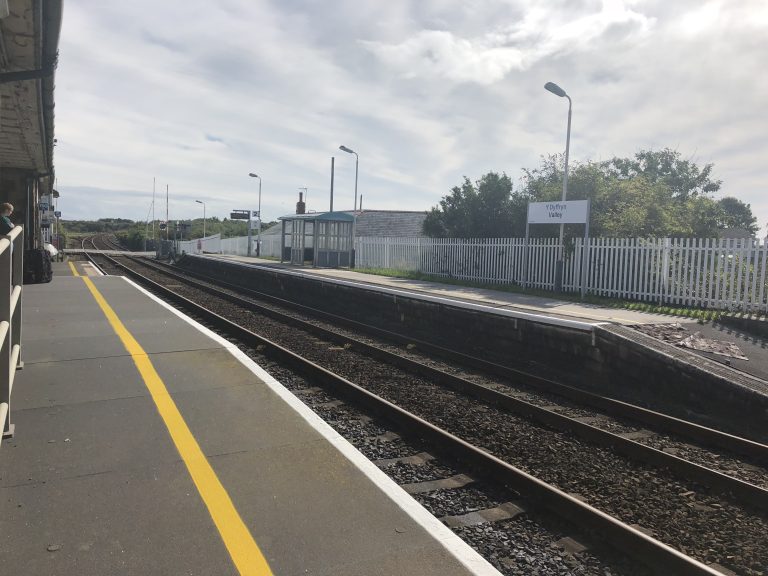
Valley railway station serves the village of Valley in Anglesey with regular Transport for Wales services operating on the North Wales Coast Line. Since stopping at Llanfair PG, the train has crossed almost the entire length of Anglesey and this…
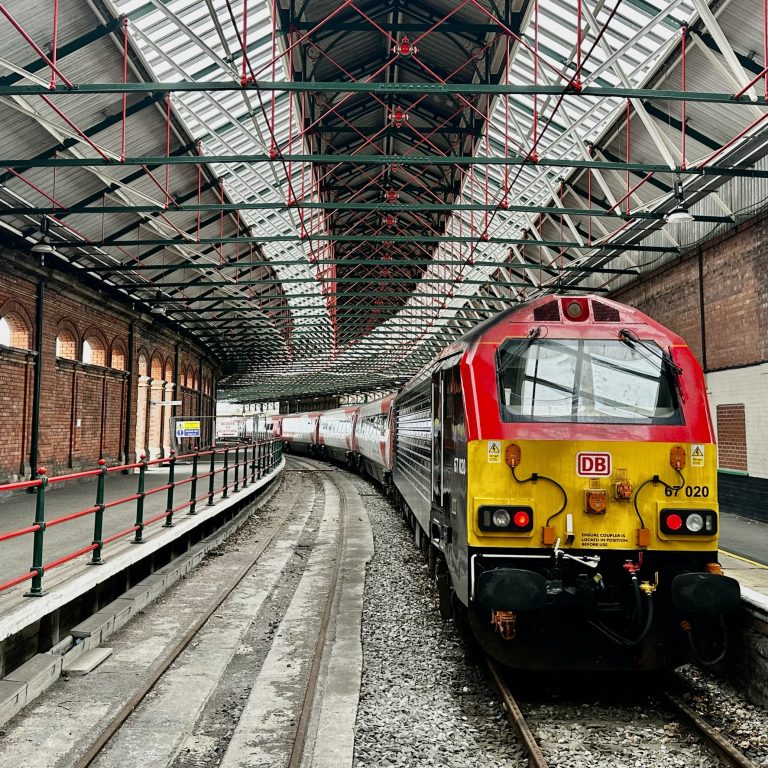
Coming to an end 105 miles west of Crewe and managed by Transport for Wales, Holyhead railway station is the western terminus of the North Wales Coast Line. This little port town on the tip of the island has always…